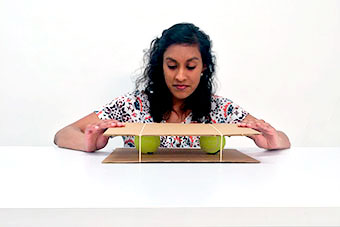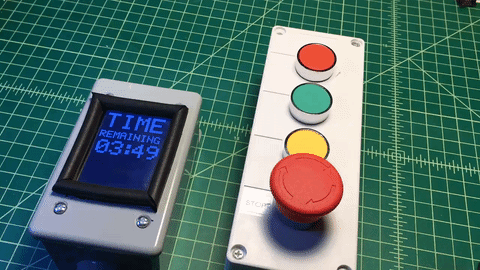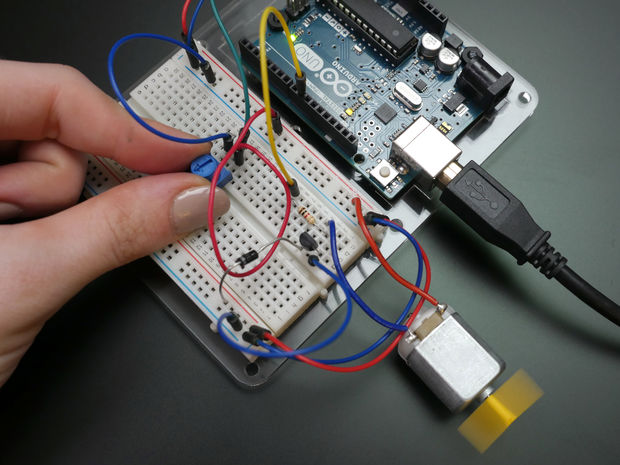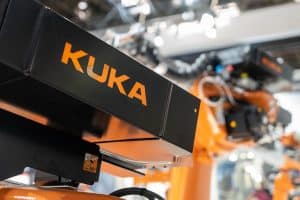School will be back in session within the next few weeks. Is your classroom ready for STEM? Science, Technology, Engineering, and Math (STEM) is crazy popular these days. Many schools are gearing up for STEM certifications and want to find unique ways to “STEM-ify” the classroom. In this article, we’ll teach you how to create a STEM class using three unique tips.
Article Topics
1. Integrating STEM into Classes that Already Exist
2. Find Unique Ways to Include Real Tech
3. Setting Realistic Expectations Around Your Program
How to Create a STEM Class
It’s important to understand the context of this article before we dive into projects and ideas.
When I refer to a STEM class, I’m talking about ALL the ways your school has STEM. This includes traditional math and science courses, STEM courses, electives, clubs, specialty programs (robotics, computer programming, tech class), etc. I’m not just referring to a course called “STEM.” While a lot of schools are shifting towards having a STEM class, most only have traditional subjects that collectively form “STEM.”
That leads me to my first tip…
#1 – Integrate STEM into classes that already exist
It’s easier to improve upon what’s already there than to start from scratch. Rome wasn’t built in a day, so don’t expect your new STEM class to be ready tomorrow. A lot of what I do is provide realistic expectations when drafting up new STEM courses for schools.
It’s easier to fund and add to an existing science course than it is to gather a completely new set of resources for a course that doesn’t exist.
So, how do we do this?
I want you to grab a piece of paper and pen and jot down all the activities your school offers that relates to STEM. Go ahead, and take a minute to brainstorm. This article will be here for you when you have your list. We will be referring to your list throughout the article, so don’t skip this part!
Did you create your list?
Hopefully you have a few courses such as Earth Science, Geometry, Coding with Python, etc. Now, circle a course that you’re very familiar with (either you teach it or could teach it if you wanted to).
Next, list out five units or high-level topics the course covers. So for my “Earth Science” course, I may cover these units:
1. What is Earth Science?
2. Topographic Maps
3. Energy Resources
4. Earthquakes
5. Volcanoes
Identify Tools and Technology You Currently Use
Then, under each of the five units, write 1-3 pieces of technology that you use for the course now. Think of every tool that you use for labs, activities, and demonstrations. It doesn’t have to be “advanced” technology either.
For example, in the Earthquake unit, I might create a shake table using tennis balls and a whiteboard.

Modernize Your Toolkit
Once you have your completed list, examine each of your tools. The goal is to find “modern” solutions that can replace some of your older tools.
https://www.instagram.com/p/BkNizawhOLK/?taken-by=mr.rt79
A prime example of this is my shake table with tennis balls and a whiteboard. There are educational kits where students can built and program an Earthquake shake table. Learn Robotics has partnered with Cubit to offer their range of STEAM kits.
These kits expand your current project from a 5 minute demo, to a model that students can develop. Assemble the shake table. Add sensors and widgets to monitor the status of the Earthquake. Write a computer program to map the vibrations to the Richter scale. Create houses or structures to withstand the Earthquake.
The possibilities are endless and highly interactive. To learn more about Cubit STEAM kits, visit the product page, here.
Cross-Examine Classes for Multiple Uses
Once you’ve identified a few outdated tools and determined a modern solution, cross examine other classes on your list. See which kits can be used in multiple places. If you have a $400 kit that can be used by 4 classes, the kit’s true cost is $100. This makes it an easier case to present to Superintendents for approval because the return on investment is a lot sooner than a $400 kit used once.
If you’re unsure where to start, Contact Us. Learn Robotics provides remote and on-site consulting services to help you map out your STEM plan. We can help you create a STEM class or conduct activities like the one outlined above, to improve and modernize existing programs.
Moving on, we have my second tip for how to create a STEM class. Find unique ways to implement real tech in the classroom.
#2 – Find Unique Ways to Implement Real Tech
One thing that frustrates me more than anything is the fact that there’s little cross-over between what engineers use in the “real world” versus what’s taught in schools. Having seen both sides, it’s my mission to bring as much relevant technology into classrooms.
Use Hardware that’s Relevant
Therefore, a simple way to implement real tech is to use hardware that is similar to the real deal. I’m a HUGE fan of Arduino. (If you’ve been in any of my classes or frequent the blog, you’ll notice my tutorials revolve around Arduino.) And, there’s two HUGE reasons for this.
#1 – Arduino is AFFORDABLE.
Starting at $25/kit, it’s the most cost effective way to bring hardware to a classroom. If you’re looking for a kit to get started, we recommend the an Arduino Starter Kit or Sensor kit, which you can pick up on Amazon.
If you teach to students in Elementary or Middle school, we recommend the Weemake controller or MakeBlock robot that runs Arduino (purely to make it easier for students to wire). I’m not against LEGO, VEX, Sphero, or Ozobots. I just think for the money, if you’re on a budget, Arduino is more similar to what engineers would use than the kits listed above.
#2 – Arduino teaches real Electrical & Programming skills
This is a great addition to Physics courses that teach circuit theory (Ohm’s Law, Kirchhoff’s Laws, etc.). Why? Because with Arduino, you can teach students the theories, show them what a circuit looks like on paper, and then actually wire it up. If you wanted to cross-collaborate with your Computer Science department, you could have students learn C or C++ and then program their controllers.

Finally, the last tip on how to create a STEM class is to set realistic expectations around goals, objectives, and budget.
Related Article
How to Start a Successful Robotics Program
#3 – Set Realistic Expectations for All Stakeholders
If you’re planning to launch a new STEM program tomorrow on a $50 budget, props to you. It’s probably not going to happen. That’s not being negative; that’s just setting a realistic expectation.

Majority of STEM, Robotics, and Electronics kits average at the $250-$500 price point PER KIT. Because of this, it is important to understand and communicate your budget and the types of activities you want to have.
I’ve written another article on budgeting for a robotics class, so feel free to check that out if you’re looking for more detailed information.
Remember, program development is an INVESTMENT. If your program is awesome, your students will benefit greatly from it. Because STEM is career-oriented, I recommend checking with your PTA/PTO or Booster Club if you need help funding materials for your course. They may have a budget specifically for youth training and development!
STEM is a Complicated Subject
Furthermore, STEM can be a complex subject to teach. There are a lot of moving parts in very interdisciplinary subjects. Robotics is a prime example of this. Everyone wants a robotics program, but no one wants to put in the effort to fully understand what robotics is and how to teach it. This includes equipment, teacher training, and curriculum. What are you going to teach? How are you going to teach it? And do you have the knowledge and tools to execute the course?
STEM is EVER-CHANGING
And lastly, STEM programs require maintenance and up-keep. We always recommend sifting through your program annually. Try to find ways to reinvent or re-innovate the course. Figure out ways to make the program better and more interactive.
Learn Robotics can help you with program revitalization and updates. Contact Us to arrange your consultation.
Final Thoughts & Next Steps
I hope you enjoyed reading through my three tips on how to create a STEM class. We covered a lot of content here including…
1. Integrating STEM into Classes that Already Exist
2. Using Real Technology in Your Class
3. Setting Realistic Expectations around Your Program
There are lots of ways to execute STEM, and this is just one of many methods.
If you have any questions or have suggestions for this article, feel free to leave a comment below. We’re here to help you create the coolest, high-tech programs around!
We’re social, too!
The conversation is always happening on Facebook and Instagram (@learnrobotics) and newly, Twitter (@learnroboticsx). Find us on your favorite platform! We love interacting with the LR family! 😉







